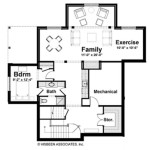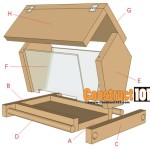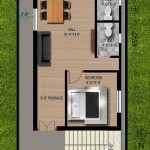What Plane Just Went Over My House in Florida? Identifying Aircraft and Understanding Air Traffic
The question of identifying an aircraft that has flown over a residence is a common one, especially in areas with significant air traffic such as Florida. Determining the identity of a plane requires considering several factors, including visual characteristics, sound, flight tracking technology, and knowledge of local air traffic patterns. This article provides a comprehensive guide to understanding air traffic and identifying aircraft that may traverse the skies above Florida homes.
Visual Identification and Aircraft Characteristics
The initial step in identifying a plane is visual observation. The size, shape, number of engines, and wing configuration are crucial elements in narrowing down the possibilities. Commercial airliners typically have a long, cylindrical fuselage with two or four engines mounted under the wings or on the rear of the fuselage. Smaller general aviation aircraft often have a single engine and a more compact design. Military aircraft can exhibit a wide variety of shapes and configurations, ranging from fighter jets with swept wings and distinctive engine placement to large transport aircraft with high wings and multiple engines.
The paint scheme and markings on the aircraft can also provide valuable clues. Commercial airlines usually display their logo and branding prominently on the fuselage and tail. Military aircraft often feature camouflage patterns or unit insignia. The tail number, also known as the registration number, is a unique identifier assigned to each aircraft. In the United States, the tail number typically begins with the letter "N" followed by a combination of letters and numbers. However, visually discerning the tail number from the ground may prove challenging, especially at higher altitudes.
The time of day and weather conditions can impact the clarity of visual identification. Sunlight and clear skies provide the best conditions for observing aircraft details. At night, aircraft navigation lights, which include red, green, and white lights, can help determine the direction of travel and relative size. The red light is usually on the left wingtip, the green light on the right wingtip, and the white light on the tail. Weather phenomena such as clouds, fog, or rain can significantly hinder visual identification efforts.
Analyzing Sound and Flight Path
The sound produced by an aircraft can offer insight into its type and engine configuration. Jet engines typically produce a high-pitched whine or roar, while propeller-driven aircraft generate a lower-frequency drone. The number of engines and their power output influence the volume and intensity of the sound. Military aircraft, particularly fighter jets, often produce a distinctive sonic boom when they exceed the speed of sound.
The flight path of the aircraft can also be informative. Commercial airliners generally follow established air routes and approach patterns to airports. General aviation aircraft may have more varied flight paths, depending on their destination and purpose. Military aircraft often engage in training exercises that involve specific maneuvers and flight patterns. Observing the direction of travel, altitude, and any unusual turns or maneuvers can assist in identifying the type of aircraft and its potential origin or destination.
Online resources, such as flight tracking websites and applications, can provide real-time information on aircraft movements. These platforms utilize data from various sources, including radar, ADS-B (Automatic Dependent Surveillance-Broadcast) transponders, and satellite tracking. ADS-B is a surveillance technology where an aircraft determines its position via satellite navigation and periodically broadcasts it, enabling it to be tracked. Users can enter their location and view a map displaying nearby aircraft, along with details such as the aircraft type, altitude, speed, and destination. Popular flight tracking services include FlightAware, Flightradar24, and Plane Finder. However, it is important to note that not all aircraft are tracked by these services, particularly military aircraft or those operating without ADS-B transponders.
Understanding Florida Air Traffic Patterns and Notable Aircraft
Florida is a state with a high volume of air traffic due to its numerous airports, military bases, and popular tourist destinations. Major commercial airports, such as Orlando International Airport (MCO), Miami International Airport (MIA), and Tampa International Airport (TPA), handle a significant number of domestic and international flights. These airports are served by a wide range of commercial airliners, including Boeing 737s, Airbus A320s, and larger wide-body aircraft such as Boeing 777s and Airbus A380s.
Florida also hosts several important military installations, including Naval Air Station Jacksonville, Eglin Air Force Base, and MacDill Air Force Base. These bases are home to various types of military aircraft, including fighter jets, transport aircraft, and helicopters. Residents living near these bases may frequently observe military aircraft conducting training exercises or transport missions. Common military aircraft seen in Florida include F-16 Fighting Falcons, F-35 Lightning IIs, C-130 Hercules transport aircraft, and various types of helicopters such as UH-60 Black Hawks and CH-47 Chinooks.
In addition to commercial and military aircraft, Florida's skies are also frequented by general aviation aircraft, including private planes, business jets, and recreational aircraft. These aircraft operate from smaller regional airports and private airstrips throughout the state. Common general aviation aircraft include Cessna 172s, Piper PA-28s, and various types of business jets such as Gulfstreams and Learjets. Air ambulances and law enforcement aircraft also contribute to the overall air traffic in Florida.
Understanding the typical flight paths and altitudes of different types of aircraft in a specific area can aid in identification. Commercial airliners generally follow established air routes and approach patterns to airports, maintaining higher altitudes until they begin their descent. General aviation aircraft may fly at lower altitudes and follow more varied routes, depending on their destination. Military aircraft often conduct training exercises in designated airspace, which may involve specific maneuvers and altitudes. Consulting local airport charts and air traffic control information can provide further insight into air traffic patterns in a particular region of Florida.
Several online resources and community forums can also assist in identifying aircraft. Websites such as FlightAware and Flightradar24 allow users to track flights in real-time and identify aircraft based on their location, altitude, and destination. Online forums dedicated to aviation enthusiasts often feature discussions and photographs of aircraft, allowing members to share information and assist in identification. Local airport websites and social media pages may also provide information on upcoming air shows, special events, or unusual aircraft activity in the area.
While identifying an aircraft that has flown over a residence can be a challenging task, utilizing visual observation, sound analysis, flight tracking technology, and knowledge of local air traffic patterns can significantly increase the chances of success. By considering the size, shape, markings, and sound of the aircraft, as well as its flight path and altitude, individuals can often narrow down the possibilities and determine the type of aircraft and its potential origin or destination. Online resources, community forums, and local airport information can provide further assistance in identifying aircraft and understanding air traffic in Florida.

From Seaplane To Lawn Ornament

Ridge Landing Airpark Gated 1 Acre Homesites With Private Runway Build Your Custom Home Here

Florida Small Plane Crash Captured On Dramatic Home Security

Plane Crashes On Florida Mobile Home Killing Three People Aviation A2z

See John Travolta S Eye Watering 10 Million Home With Private Airport O

Boeing C 32 Wikipedia

Plane Crashes On Florida Mobile Home Killing Three People Aviation A2z

Florida Small Plane Crash Captured On Dramatic Home Security

A Plane Disappeared And Landed 37 Years Later
People In Florida Neighborhood Grab Tools To Rescue 4 Plane Crash Ap News
Related Posts








